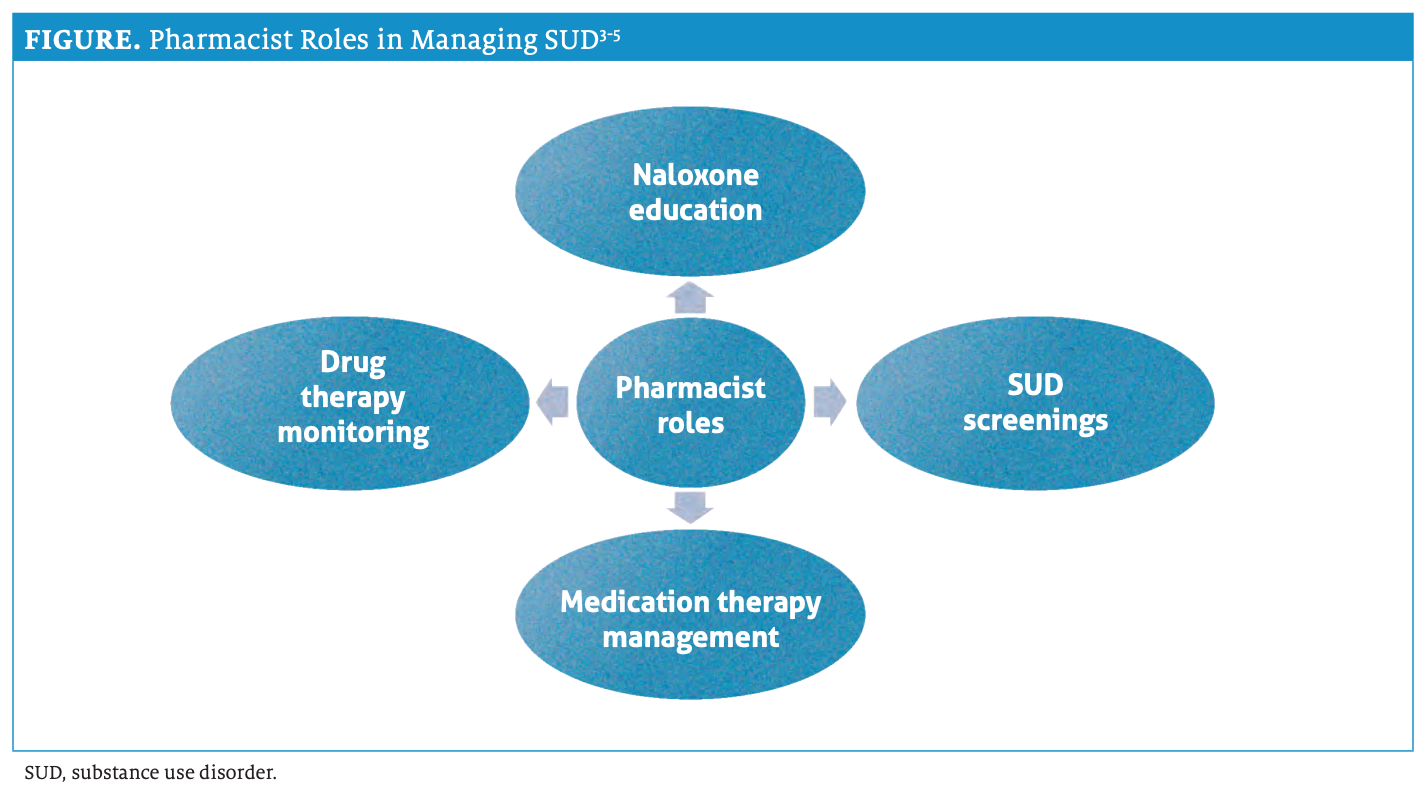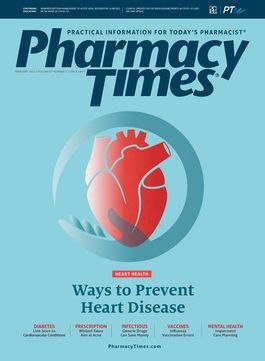Publication
Article
Pharmacy Times
Get Advanced Training to Help Patients With Substance Use Disorder
Author(s):
Opioid overdoses are increasing, and pharmacists can play an integral role in prevention.
As the coronavirus disease 2019 (COVID-19) pandemic persists, it is important to ensure that individuals who have substance use disorder (SUD) are appropriately treated.
Evidence shows that stress, such as that brought on during the COVID-19 pandemic, can lead to an increase in alcohol or substance use.1
Even before COVID-19, overdose deaths were increasing, with more than 80% involving opioids from January 2019 through June 2019, according to the CDC.2 Evidence also shows that opioid overdoses have increased during the COVID-19 pandemic.3 Increasing access to and distribution of the lifesaving opioid antagonist naloxone are critical to reverse opioid overdose.4,5 Pharmacists can play an important role in treating patients with SUD and preventing opioid overdoses through education in their practice setting (FIGURE3-5).

Indian Health Service (IHS) pharmacists have expanded clinical practices for greater access to naloxone (Narcan), medication-assisted treatment, and opioid use disorder (OUD) prevention resources.4 Pharmacists completed advanced training, and became part of a multidisciplinary team. One study evaluated the practice setting, and findings suggest that the IHS almost tripled its purchasing of naloxone and significantly increased access through direct-patient and first responder initiatives.4 The FDA recently issued a drug safety communication recommending that all health care professionals discuss naloxone with patients and consider prescribing it for all individuals taking medications to treat OUD.5 Additionally, the agency requires drug manufacturers add new recommendations about naloxone to the prescribing information for all opioid pain relievers and medications used to treat OUD.5
In an interview, Danya Becker, PharmD, a clinical pharmacy specialist, and Amy Plumley, PharmD, BCACP, CDCES, a primary care clinical pharmacy supervisor, discuss their unique roles in treating patients with SUD at VA Pittsburgh Healthcare System in Cheswick, Pennsylvania. Veterans receive initial screenings for SUD, along with medication therapy management for other health conditions. The pharmacists conduct brief interventions associated with alcohol and illicit substance use problems, and they provide referrals to SUD health care providers and specialty clinics for medication therapy. They are developing competencies to participate in SUD medication initiation and monitoring, as pharmacists are not authorized to prescribe buprenorphine, an opioid used to treat addiction to narcotic pain relievers, under federal controlled substance laws.
“If a veteran required buprenorphine, an overseeing physician would prescribe the medication with the clinical pharmacist managing and monitoring the therapy,” Becker said.
Clinical pharmacists in this practice setting serve as part of a multidisciplinary team treating patients with SUD.
At the facility, Becker said, pharmacists interested in treating patients with SUD must complete 24 hours of x-waiver training related to prescribing buprenorphine/naloxone; finish an additional 21 hours of continuing education; and perform patient care with a mentor for 30 days. Additionally, pharmacists receive professional performance reviews every 6 months.
“All clinical pharmacists in the primary care setting at our facility will be provided with about 16 hours of basic training to allow them to provide screening, brief interventions, and referrals for care for all veterans being seen in our clinics. We are hoping this will improve veteran outcomes, increase awareness of possible problem behaviors, and reduce stigma,” Becker said.
Treatment options such as buprenorphine and methadone, which also can be used to treat narcotic drug addiction, are available for all patients based on the best therapy for them.
Naloxone is provided to all veterans at risk for overdose, their caregivers, and individuals on long-term opioid therapy, Becker said, noting that it is important to reduce the stigma associated with having naloxone available.
“I attempt to [compare] the medication to a fire extinguisher,” she said. “We are all taught about fire safety as children, and we all know how to prevent house fires. However, accidents can happen, and relapses can occur.”
When naloxone nasal spray is dispensed, Becker always lets caregivers and veterans know that, unlike other nasal sprays, it cannot be primed, so it is a “one and done” type of medication.
JENNIFER GERSHMAN, PHARMD, CPH, is a drug information pharmacist and Pharmacy Times® contributor who resides in South Florida.
REFERENCES
- CDC. COVID-19 questions and answers: for people who use drugs or have substance use disorder. Updated December 28, 2020. Accessed January 15, 2020. https://www.cdc.gov/ coronavirus/2019-ncov/need-extra-precautions/other-at-risk-populations/people-whouse-drugs/QA.html
- Overdose deaths and the involvement of illicit drugs. CDC. Updated September 4, 2020. Accessed November 9, 2020. https://www.cdc. gov/drugoverdose/pubs/featured-topics/ VS-overdose-deaths-illicit-drugs.html
- Slavova S, Rock P, Bush HM, Quesinberry D, Walsh SL. Signal of increased opioid overdose during COVID-19 from emergency medical services data. Drug Alcohol Depend. 2020;214:108176. doi:10.1016/j.drugalcdep.2020.108176
- Duvivier H, Gustafson S, Greutman M, et al. Indian Health Service pharmacists engaged in opioid safety initiatives and expanding access to naloxone. J Am Pharm Assoc. 2017;57(2S):S135-S140. doi:10.1016/j. japh.2017.01.005
- FDA recommends health care professionals discuss naloxone with all patients when prescribing opioid pain relievers or medicines to treat opioid use disorder. July 23, 2020. Accessed November 9, 2020. https://www. fda.gov/drugs/drug-safety-and-availability/ fda-recommends-health-care-professionals-discuss-naloxone-all-patients-whenprescribing-opioid-pain






